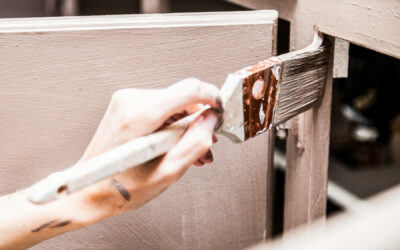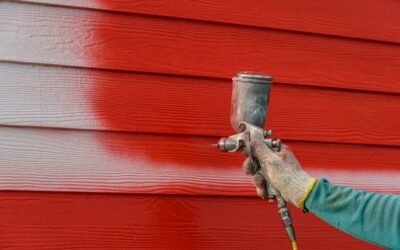
The walls of our homes serve as a canvas for our lives. They witness the daily routines, celebrations, and quiet moments. Over time, however, the vibrancy of the colors on those walls can fade, leading us to ponder a question that often crosses our minds: How often should we repaint our walls?
The Dynamics of Wall Paint
Wall paint is not just about aesthetics; it plays a crucial role in preserving and protecting the surfaces of our homes. Various factors contribute to the wear and tear of paint, and understanding these dynamics is key to determining when it’s time for a fresh coat.
1. Exposure to Natural Elements
One of the primary factors affecting the longevity of wall paint is exposure to natural elements. Outdoor walls are particularly susceptible to sunlight, rain, and fluctuating temperatures. Sunlight can cause colors to fade, while rain and humidity may lead to peeling and discoloration. If your home is exposed to extreme weather conditions, it might warrant more frequent repainting.
2. High-Traffic Areas
Certain areas of our homes witness higher footfall and activity than others. Hallways, living rooms, and kitchens are examples of high-traffic zones. Constant movement, accidental bumps, and spills can wear down paint faster in these areas. Regular touch-ups or repainting might be necessary to maintain a fresh and welcoming atmosphere.
3. Quality of Paint
The type and quality of paint used also play a significant role in determining its lifespan. High-quality paints with better pigments and binders tend to last longer and provide superior protection against wear. Investing in quality paint can be a cost-effective decision in the long run, as it reduces the frequency of repainting.
The Time Frame: How Often Should You Repaint?
Now that we understand the factors influencing the longevity of wall paint, let’s delve into the recommended time frames for repainting different areas of our homes.
1. Exterior Walls: Every 5-7 Years
Exterior walls bear the brunt of nature’s elements. Sun, rain, and temperature variations can take a toll on the paint, leading to a faded and weathered appearance. In general, it is advisable to repaint the exterior of your home every 5 to 7 years. However, if you live in an area with harsh weather conditions, more frequent repainting may be necessary.
Regular inspections can help identify signs of peeling or discoloration, indicating that it’s time for a fresh coat. Additionally, choosing high-quality exterior paint with UV-resistant properties can extend the lifespan of the paint.
2. Living Rooms and Hallways: Every 3-5 Years
Living rooms and hallways are often the heart of a home, bustling with activity and gatherings. These high-traffic areas are prone to scuff marks, stains, and wear. Repainting every 3 to 5 years can help maintain a fresh and inviting atmosphere.
Consider opting for washable and durable paints in these spaces to make cleaning easier and extend the life of the paint. Regular cleaning and maintenance can also contribute to prolonging the vibrancy of the colors.
3. Bedrooms and Low-Traffic Areas: Every 7-10 Years
Bedrooms and less frequently used areas may not require repainting as frequently as high-traffic zones. A well-maintained bedroom can go without a fresh coat for 7 to 10 years. However, factors such as exposure to sunlight and the quality of paint used can influence this timeframe.
Regularly inspecting the walls for any signs of wear or fading is advisable. Additionally, if you decide to change the color scheme or redecorate, it might be a good time to consider repainting.
4. Kitchens and Bathrooms: Every 3-7 Years
Kitchens and bathrooms face unique challenges, including moisture, steam, and frequent cleaning. These conditions can lead to paint peeling and discoloration over time. Repainting every 3 to 7 years in these areas is recommended to maintain a hygienic and visually appealing environment.
Choosing moisture-resistant paints for kitchens and bathrooms can help combat the effects of humidity and steam. Regularly inspecting these spaces for any signs of wear, especially near sinks and showers, can prompt timely repainting.
Signs It’s Time for Repainting
While the suggested time frames provide a general guideline, paying attention to specific signs can help you determine when your walls are due for a fresh coat of paint.
1. Peeling or Cracking Paint
Peeling or cracking paint is a clear indication that the protective layer is compromised. This can expose the underlying surfaces to damage and requires immediate attention. Repainting these areas not only enhances aesthetics but also prevents further deterioration.
2. Faded or Discolored Colors
Colors that have significantly faded or changed in hue suggest exposure to sunlight or other environmental factors. Repainting can revitalize the space and bring back the intended color scheme.
3. Visible Stains and Marks
High-traffic areas are prone to stains and marks, especially in homes with children or pets. Regular cleaning may not be sufficient to remove stubborn stains, necessitating a fresh coat of paint to restore the walls’ cleanliness.
4. Mold and Mildew Growth
Moisture-prone areas like bathrooms and basements can experience mold and mildew growth. Besides addressing the root cause of moisture, repainting with mold-resistant paints is essential to prevent recurring issues.
5. Change in Decor or Style Preferences
Sometimes, the need for repainting arises from a desire to update the interior decor or accommodate a change in style preferences. If you’re considering a makeover, repainting the walls can be a transformative and cost-effective way to achieve a new look.
The Case for Professional Painting Services
As the decision to repaint your walls looms, you’re faced with the choice between a DIY approach and hiring professional painting services. While the allure of a DIY project can be strong, there are compelling reasons why opting for professional painters might be the ideal choice.
1. Expertise and Experience
Professional painters bring a wealth of expertise and experience to the table. They have a deep understanding of various surfaces, paint types, and application techniques. This knowledge allows them to assess the condition of your walls, identify potential issues, and recommend the best course of action.
Whether it’s dealing with imperfections, repairing damaged surfaces, or achieving a flawless finish, professional painters have the skills honed through years of practical experience. Their attention to detail ensures that every nook and cranny receives the right treatment, resulting in a polished and long-lasting outcome.
2. Efficiency and Timeliness
Time is often a critical factor when it comes to home improvement projects. Professional painters are well-versed in efficient work processes that minimize disruptions to your daily routine. They come equipped with the necessary tools and equipment, allowing them to complete the job in a fraction of the time it might take for a DIY enthusiast.
The timely completion of the project is not only convenient for homeowners but also crucial in preventing prolonged exposure of your walls to potential damage. Professional painters work with a sense of purpose, ensuring that the newly painted walls are ready for you to enjoy in the shortest possible time.
3. Quality Assurance
One of the primary reasons to opt for professional painting services is the assurance of quality. Professionals use premium-grade paints and materials, ensuring a finish that not only looks great initially but also withstands the test of time. The quality of work extends beyond the visible surface, addressing underlying issues and preparing the walls for a durable coat of paint.
Additionally, professional painters adhere to industry standards and best practices, guaranteeing a uniform and smooth application. This commitment to quality results in a professional-looking finish that enhances the overall aesthetics of your home.
4. Attention to Surface Preparation
The success of any painting project lies in thorough surface preparation. Professional painters understand the importance of this step and invest time and effort in ensuring that surfaces are properly cleaned, repaired, and primed before applying the paint.
Surface preparation is a critical aspect that DIY enthusiasts might overlook or underestimate. Professional painters, on the other hand, meticulously prepare the surfaces, addressing issues such as cracks, peeling paint, and uneven textures. This meticulous preparation contributes to the longevity of the paint job and prevents premature wear and tear.
5. Customization and Color Consultation
Choosing the right color scheme for your home can be a daunting task. Professional painters often offer color consultation services, helping you navigate the vast array of color options available. Their expertise in understanding how colors interact with lighting and space can guide you in making informed decisions that align with your preferences and the overall theme of your home.
Furthermore, professional painters can provide custom solutions, such as textured finishes or specialized painting techniques, to add a unique touch to your walls. Their ability to customize the painting process allows for a tailored approach that caters to the specific needs and style preferences of each homeowner.
6. Warranty and Guarantee
Many professional painting services provide warranties and guarantees for their work. This assurance is a testament to their confidence in the quality of their craftsmanship. In the rare event of issues arising post-painting, such as peeling or discoloration, reputable professionals will typically address these issues at no additional cost within the warranty period.
This peace of mind is invaluable and sets professional painting services apart from the uncertainties that DIY projects may carry. Knowing that your investment is backed by a warranty provides an added layer of protection for your home.
7. Safety Considerations
Painting can involve working at heights, handling potentially harmful chemicals, and using specialized equipment. Professional painters are trained to prioritize safety, both for themselves and the occupants of the home. They are equipped with the necessary safety gear and follow protocols to minimize risks during the painting process.
Attempting a DIY painting project without the appropriate safety measures can lead to accidents and injuries. Professional painters are well-versed in safety procedures, creating a secure environment for everyone involved.
Conclusion
While the allure of taking matters into your own hands may be tempting, the benefits of choosing professional painting services are undeniable. From expertise and efficiency to quality assurance and safety considerations, the decision to enlist the services of professionals goes beyond the immediate satisfaction of completing a DIY project.
Investing in professional painting not only enhances the visual appeal of your home but also ensures a durable and lasting finish. As the colors grace your walls, each brushstroke tells a story of precision, experience, and a commitment to transforming your living spaces into a canvas of enduring beauty.
Read Other Blog Posts
How Do I Choose the Best Painters Near Me in Oregon?
Allowing someone into your...
How to Prepare Your Kitchen for Cabinet Painting
Upgrading your kitchen doesn’t...
When To Hire a Professional Painting Company
Painting your home can be a...
Does Home Insurance Cover Exterior Painting?
Whether you want to give your...
How do I find the best Cabinet Painters Near Me?
Looking to renovate your...
3 Signs It’s Time To Paint Your House Exterior
Painting exterior surfaces on...






